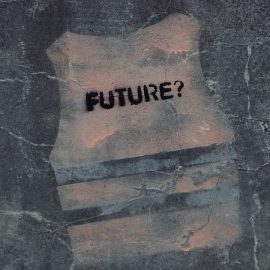

This article is an excerpt from the Shortform book guide to "Poor Charlie's Almanack" by Charles T. Munger. Shortform has the world's best summaries and analyses of books you should be reading.
Like this article? Sign up for a free trial here .
What is the meaning of a circle of competence? Why must you know what you are good at?
Charlie Munger defines your circle of competence as an area of expertise that matches your skills and experience. It is the subject area you are good at. Knowing your area of expertise helps you recognize where your boundary is and avoid dabbling in ventures that will lead to failure.
Read more about the importance of knowing your circle of competence.
Know What You Are Good At
To make good decisions, you need to know what you’re good at and what you’re bad at. Munger calls this the “circle of competence”—know where your boundary is, and don’t step outside of the circle.
Here are elaborations of this idea:
- “Knowing what you don’t know is more useful than being brilliant.”
- “People are trying to be smart—all I am trying to do is not to be idiotic, but it’s harder than most people think.”
- “You have to figure out what your own aptitudes are. If you play games where other people have the aptitudes and you don’t, you are going to lose.”
- “It’s great to have a manager with a 160 IQ—unless he thinks it’s 180.”
- “It is impossible to begin to learn that which one thinks one already knows.”—Epictetus
- “If you have competence, you know the edge. It wouldn’t be a competence if you didn’t know where the boundaries lie. [Asking whether you’ve passed the boundary is] a question that almost answers itself.”
- “Not ignorance, but ignorance of ignorance is the death of knowledge.”—Alfred Whitehead
Example: Planck and Chauffeur Knowledge
To illustrate the idea of the circle of competence, Munger tells a story about the physicist Max Planck and his chauffeur. Planck was driving around Germany giving lectures on physics, and his chauffeur listened to every lecture and soon memorized it. One night, the chauffeur asked Planck if he could pretend to be Planck and give the lecture in his stead. Amused, Planck agreed. That night the chauffeur gave a flawless performance of the lecture, and the crowd was none the wiser. Then a physicist stood up and asked an advanced question that the chauffeur had no chance of answering. The chauffeur responded, “I’m surprised you’re asking such a basic question, so I’m going to ask my chauffeur to respond.”
The point of the story is that there are two types of knowledge.
- The first is Planck knowledge—they have true competence and they know what they’re talking about.
- The second is chauffeur knowledge—they’ve learned to imitate the talk and make an impression, but they don’t really have actual knowledge.
In each domain, you need to know whether you have Planck knowledge or chauffeur knowledge. Don’t act like you have Planck knowledge when in reality you’re the chauffeur.
Bee Dances
Munger gives another example about bee dances. When a bee finds nectar, it returns to the hive and does a dance to tell the hive where to find it—how far to go in what direction. The dance is baked into the bee’s genetics.
A scientist decided to test the limits of this system and put nectar straight above the hive. In normal situations, nectar is never above the hive (flowers don’t grow in the sky), so the bee doesn’t have natural programming to signal this.
So what does the bee do? Ideally, it’d just sit there and do nothing. But instead, the bee dances a crazy, incoherent dance. The other bees see this dance and misinterpret where the nectar is, and so this single confused bee throws off the entire hive.
Many people are like the confused bee—they answer questions outside their circle of competence. Even when they know they’re confused, they try to bluster and pretend they know what they’re talking about. Munger actively looks for people who pretend to have confidence they know nothing about, and then he gets rid of them—they confuse the rest of the hive.
Circle of Competence and Investing
In investments, Charlie Munger and Warren Buffett know what they’re good at and what they’re bad at. They hesitate to stray outside their circle of competence.
For example, they have three baskets for investing: yes, no, and too tough to understand.
- First, Munger looks for an easy to understand, dominant business franchise that can sustain itself and thrive in all market environments. Most businesses don’t make this cut.
- Certain businesses, like pharmaceuticals and technology, go into the “too tough to understand” bucket. Munger finds that the dynamics of software and computer chips are simply outside their area of expertise, so they reject them completely. Munger and Buffett don’t try to grasp the esoteric—they simply try to remember the obvious.
- “Hot” deals and IPOs get rejected as no’s (Munger considers these as overhyped and overpriced).
As a cautionary tale, Munger tells the story of the hedge fund Long-Term Capital Management. The firm employed plenty of brilliant, hardworking people, but they became overconfident and took on too much leverage. Within four months in 1998, it lost $4.6 billion, needed to be bailed out, and eventually dissolved.

———End of Preview———
Like what you just read? Read the rest of the world's best book summary and analysis of Charles T. Munger's "Poor Charlie's Almanack" at Shortform .
Here's what you'll find in our full Poor Charlie's Almanack summary :
- A collection of Charlie Munger’s best advice given over 30 years
- Why you need to know what you’re good at and what you’re bad at to make decisions
- Descriptions of the 25 psychological biases that distort how you see the world






